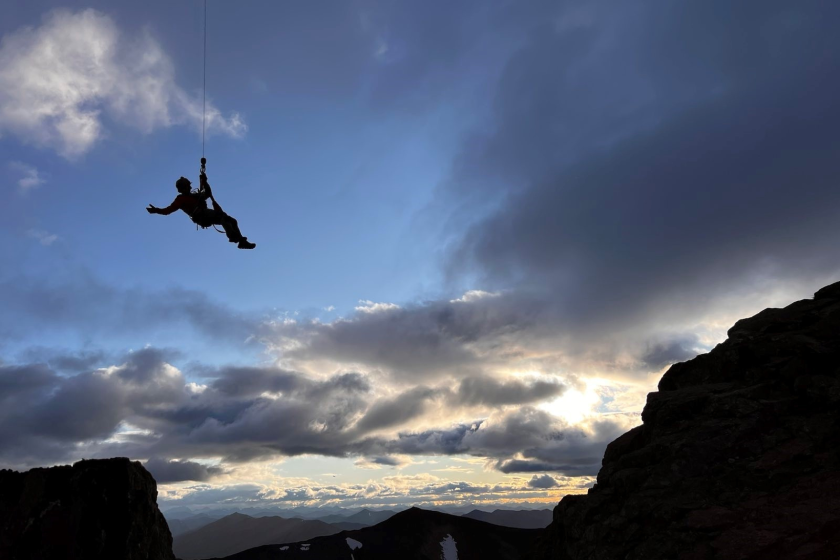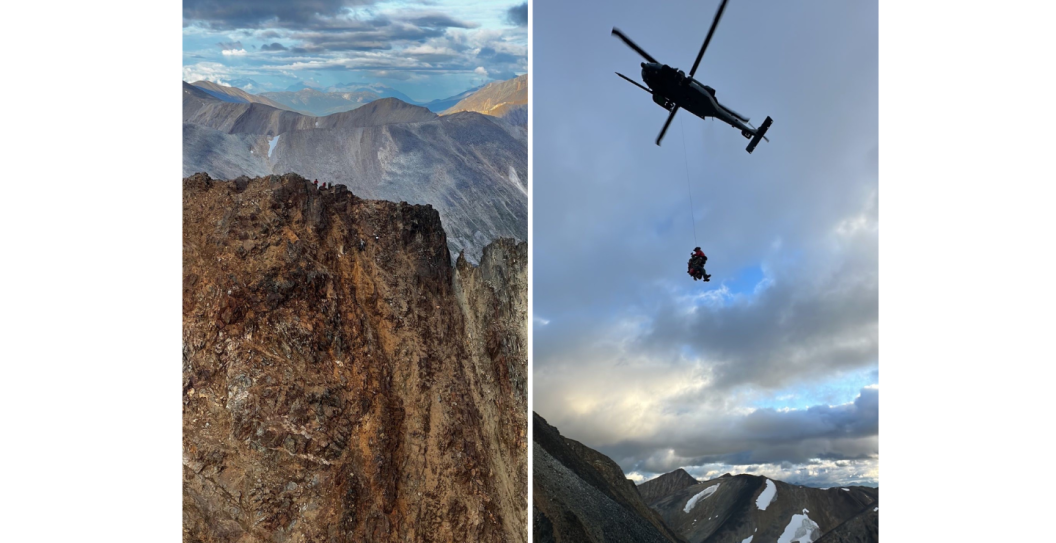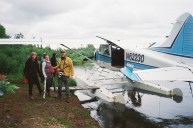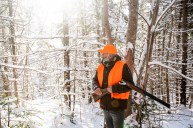A Dall sheep hunting trip went completely awry when two hunters found themselves stranded on a cliff in the mountains of Tonsina, Alaska, 165 miles east of Anchorage.
Tonsina is known for its big rams and its inaccessibility. Hunters face a long walk into sheep territory from the road and an even harder climb into the mountains themselves—one that is sometimes only fit for hoofed feet.
According to Alaska Public Media, two hunters found this out the hard way on Aug. 11, when they attempted to follow a sheep along a rocky ridge. While the sheep made it just fine, the hunters found themselves stuck, clinging to a cliff 6,000 feet above the ground.
Luckily, the hunters had a two-way satellite communication device and were able to call for rescue, sending out an SOS signal. The call was picked up by Alaska state troopers, who alerted the Alaska Rescue Coordination Center (AKRCC), located on Joint Base Elmendorf-Richardson, the Army and Air Force base in Anchorage.
A Ridiculously Remote Rescue
Because of the remote, precarious nature of the rescue, the AKRCC called in the experts: the elite 176th Wing of the Air National Guard. The unit formed a rescue team from various units and dispatched the team in two helicopters, an HH-60G Pave Hawk and an HC-130J Combat King II. On board were the elite 212th Rescue Squadron Guardian Angel pararescuers.
Once the rescue team reached the site, they had to proceed with caution. According to the 176th Wing's statement, the potential for rotor washing knocking the hunters off the cliff made it impossible to do a direct overhead hoist. They instead inserted pararescuers onto the top of the cliff to set up a belay line for the trapped hunters to hold onto. Once the hunters were secured, pararescuers were lowered to them from the helicopters, and they were then hoisted to safety.

176th Wing, Alaska Air National Guard
"We were all amazed at the situation they were in to begin with, because they were pretty much just hanging on to a cliff face," Guard Capt. Tim Lezama told Alaska Public Media. "There was nowhere for them to really go, outside of us picking them off that cliff face."
The hunters had spent about two hours clinging to the side of the cliff. After being rescued, they were safely ferried to the Alaska state troopers at Mile 65 of the Richardson Highway. All told, the rescue took 15 to 20 minutes once the helicopters arrived on the scene.
The Importance of Carrying a Satellite Device
One of the incredible things about hunting is that it often takes us into beautiful, remote areas of the world. When things are going right, the remoteness offers a great chance to reconnect with nature. When things go wrong, however, it can become dangerous very quickly, as these areas often don't have the cell service needed to call for rescue.
In remote areas or any area without reliable cell service, a satellite device should be a part of your hunting survival gear. In the 176th Wing statement, Guard Capt. Lezama credited the sheep hunters' decision to carry a satellite device with saving their lives. The hunters were far from any cell tower but were still able to summon help with their device.
What About Apple's Emergency SOS?
Apple phone users have access to the new Emergency SOS satellite feature, which can help in some situations—such as the teen hikers who used it to call for help when they got lost on a hike in California earlier this summer. However, it's best not to rely entirely on cellphones when in the remote backcountry. Batteries die quickly when a phone isn't in airplane mode, and phones can break easily if they're dropped on a rock or in a river.
A phone also often has to be unlocked to use the SOS feature, something that could be difficult to do if you're severely injured. The hunters' device had an SOS button that was easy for them to push while in such a precarious position, and the device also gave the rescue team the hunters' precise coordinates, which helped the team locate the two heavily camouflaged hunters.
Lastly, the speed of the response to the hunters' SOS call was vital to the mission's success. Satellite devices are connected to the International Emergency Response Coordination Center (IERCC) a global network of first responders, whereas Apple has its own dispatch system for summoning help. Apple's response network is less experienced and specific, while the IERCC is far more experienced and, as shown in this situation, can even mobilize military units in very little time.




